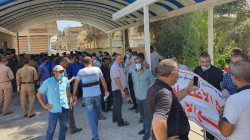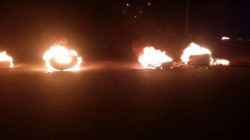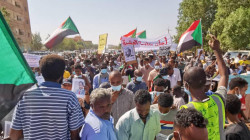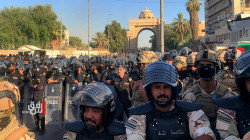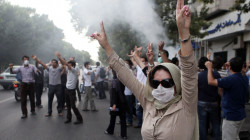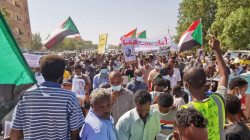Iraqi artists tell their story after pulling art from Berlin Biennale
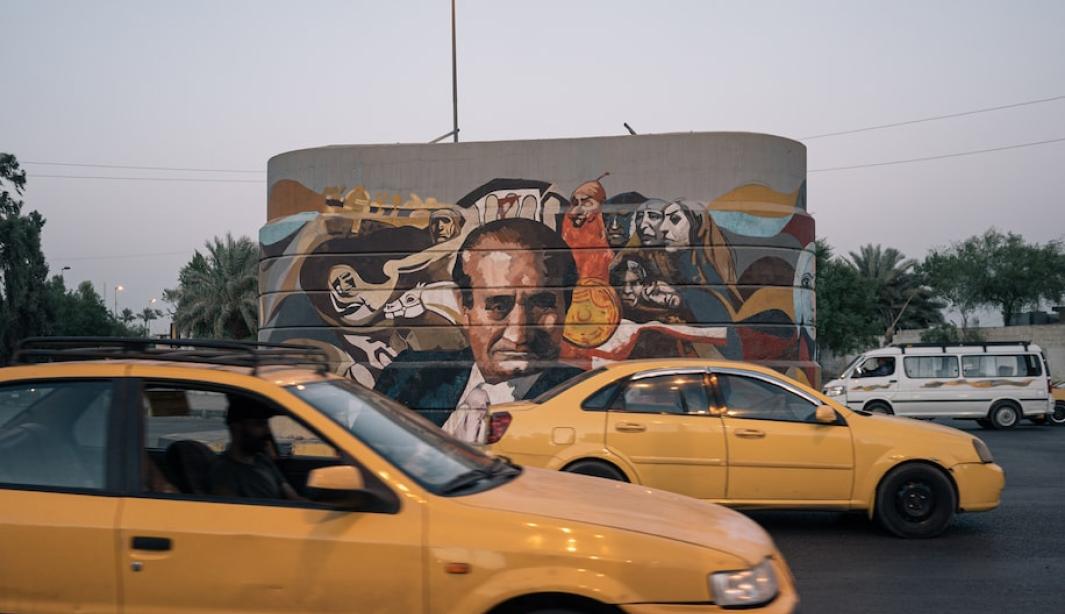
Shafaq News / When three Iraqi artists were invited to exhibit their work at this year’s Berlin Biennale, the curated themes – decolonization and reform – promised to give voice to a topic the trio understood best.
They each grew up in the shadow of the 2003 invasion of America, and their art is now grappling with its aftermath. Laith Karim’s film explores societal trauma and healing. Sajjad Abbas brought a banner with a picture of his eye he had once hung across from Baghdad’s heavily fortified Green Zone, intended to symbolize the Iraqi experience of witnessing the $2 trillion occupation.
But as the group entered the exhibition hall, a different installation on Iraq loomed: a series of war trophies taken by US soldiers – photographs of the torture and sexual abuse of Iraqi prisoners inside Abu Ghraib prison – presented to shocking French artist. Exhibition visitors.
“There was an idea that it’s good for us – that’s what’s good for the world – just to see these pictures again,” said Iraqi Art Gallery curator Regin Sahakian, who introduced the artists to the gallery’s organisers.
This episode highlights uncomfortable questions: Who has been allowed to tell Iraq’s modern history on the world stage? Where is the work of the Iraqi artists who live in it?
All we asked was that you have an unspoken voice,” Sahakian said. Participating Iraqi artists assembled with photos.
Although few Iraqi artists exhibit their work internationally, visual representations of the country are usually dominated by Western media.
Iraqi artists were among the most famous in the region. In 1951, Jawad Salim and Shakir Hassan Al Said founded the Baghdad Group for Modern Art as they sought a distinct Iraqi artistic identity, blending modernist styles with local history and motifs.
But over time, their work was contained by political forces, and by the late 1980s, Saddam Hussein’s Ba’ath Party dominated the art scene and used it for propaganda.
Today, the Iraqi government is among the most corrupt in the world. Public services are faltering, the power grid is on its knees, and sweltering heat is destroying the land that once provided food and employment.
Climate migrants flee the dry, rural south of Iraq, but the cities offer no refuge
As a new generation of Iraqis work to tell their own stories through contemporary art, they face obstacles at every turn.
The yellow-brick Institute of Fine Arts in Baghdad teaches only classical styles, so students branching out into new media should use whatever space they can find. They work at home, on rooftops, or together in small studios, often with limited money and little storage space for the pieces they produce.
Private galleries exist but are difficult to break into, often requiring personal connections and advertising money. Scholarship funding requires applications to be submitted in fluent English. When international opportunities arise, many artists find that they cannot obtain visas for their own exhibitions.
“It takes a lot of communication and time,” said Hella Moyes, a German-born curator in Baghdad. “You need to know the system and the art market and it’s very complicated.”
But the city has one sanctuary: the installation house, or installation house, tucked away in the historic Karrada district among old Jewish homes and tall palm trees. Founded by Mewis in 2015, this venue is dedicated to nurturing contemporary art, with artist studios and spaces for young people to learn painting techniques, ballet, and musical instruments.
From every wall, the artists’ work showcases features of Iraqi life. Pictures and sculpture paint the changing face of Baghdad. The Sumerian-style house brush invites visitors to cast off the judgment of a closed and sometimes conservative society. In one room, an oil painting of a dirty white T-shirt captures intimate details about what a person experiences when a car bomb goes off on an ordinary day.
When a Palestinian artist visited recently, he described the tone of the work as distinct from the rest of the region, Moyes recalls. Here he said that with every artist you see that they are Iraqis. “There are different approaches,” she said, “but you don’t see the Western influence.” “This is the best compliment we have ever received.”
In April 2019, they spread their artwork across the public gardens on Abu Nawas Street, and the exhibits felt like a cry against corruption and stifling ambition.
In hindsight, Moyes realizes, the matter has taken the pulse of a community on the verge of rebellion. Seven months later, small protests against state corruption turned into a large-scale uprising against the political system, and artists joined Iraqis from all walks of life.
Baghdad rebels build a beach
After more than 600 people were killed in a government crackdown, protesters etched this history on the walls. Near Baghdad’s Tahrir Square, a gray stone underpass has turned into a riot of colour. The murals showed the names and faces of the dead in gold font and black and white drawings.
Zaid Saad was among the artists exhibiting at that 2019 festival, and the 31-year-old’s work – bags cast from concrete – focused on the rejection Iraqis face when trying to reach Europe or America.
One day, he wanted this work to be exhibited at the New York Museum of Modern Art.
During his student days at the Institute of Fine Arts, he made plans with his friends for future projects. But amid growing economic desperation, at least 10 of them boarded migrant boats bound for Europe in 2015.
Some members of the group died at sea. Others made it, but they fell out.
Millions of Iraqis have left the country since 2003 to escape violence and poverty.
In the entrance to a house is a work installation that Saad used to reflect this loss: a white door near the Central Bank on Al-Rasheed Street is fixed to the wall, and a half-wheel of a bicycle protrudes toward the viewer from the wood.
“This has to do with our plans, how they stayed with me,” he said, looking down at a half-wheeled spokeswoman. “The other half crossed over to another world, and I can’t see what’s there.”
Saad is making his sculptures outside now as the summer heat recedes. Flood light illuminates the yard like a theatre. The process is calm, sometimes meditative, as the water mixes with the cement and the mixture covers his hand like a glove.
One night, the driver was honking his car horn in the street, but Saad was busy with his work. “I think of many things as I do this,” he said.
His last work in the gallery, once again, focused on emigration, and his friends were still on his mind. “Some of them trusted me a lot and told me they were leaving before they told their families,” he said.
His work was nearing completion, and he poured the last of the concrete into its mould.
“I always feel sad when I read news about refugees,” he said.
“Is letting people in really important?”
(The Washington Post)
